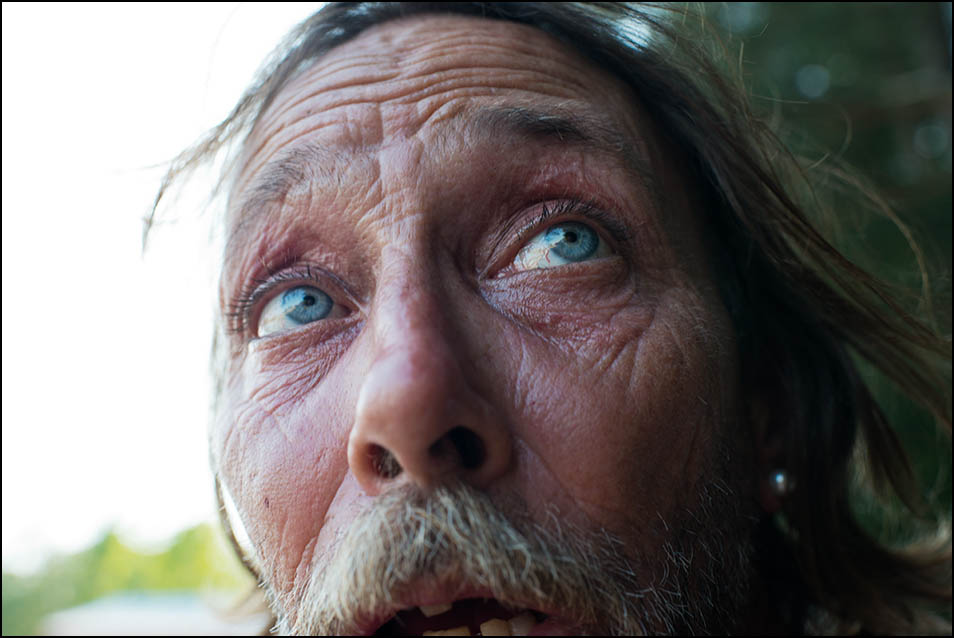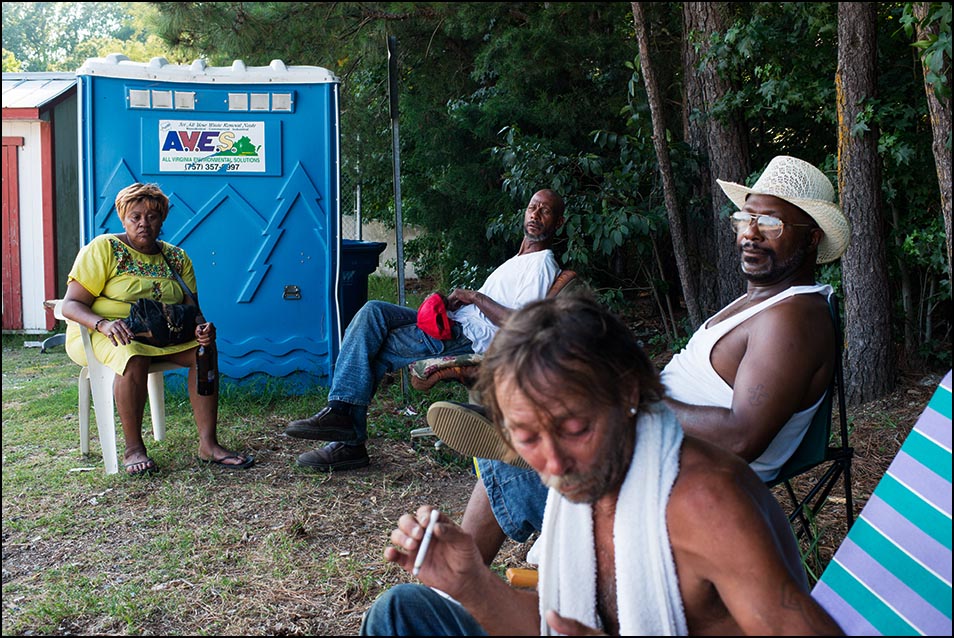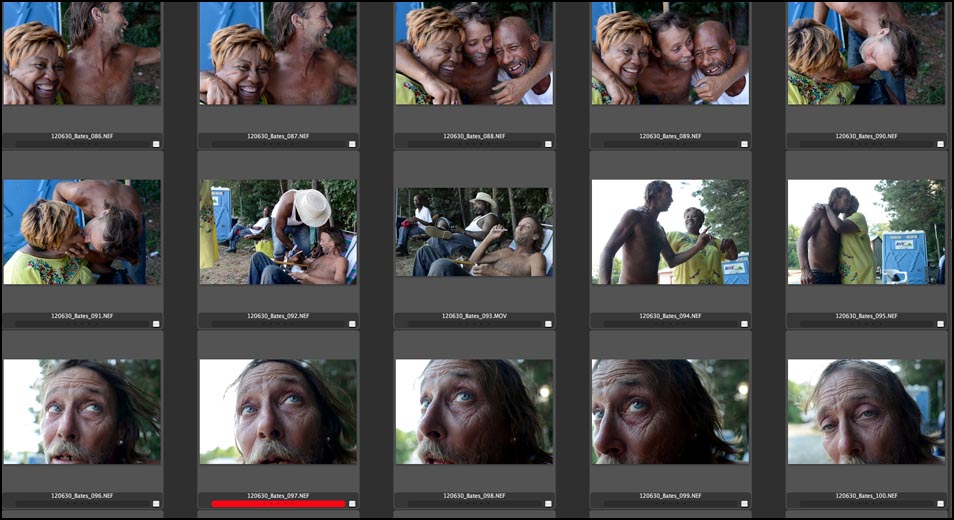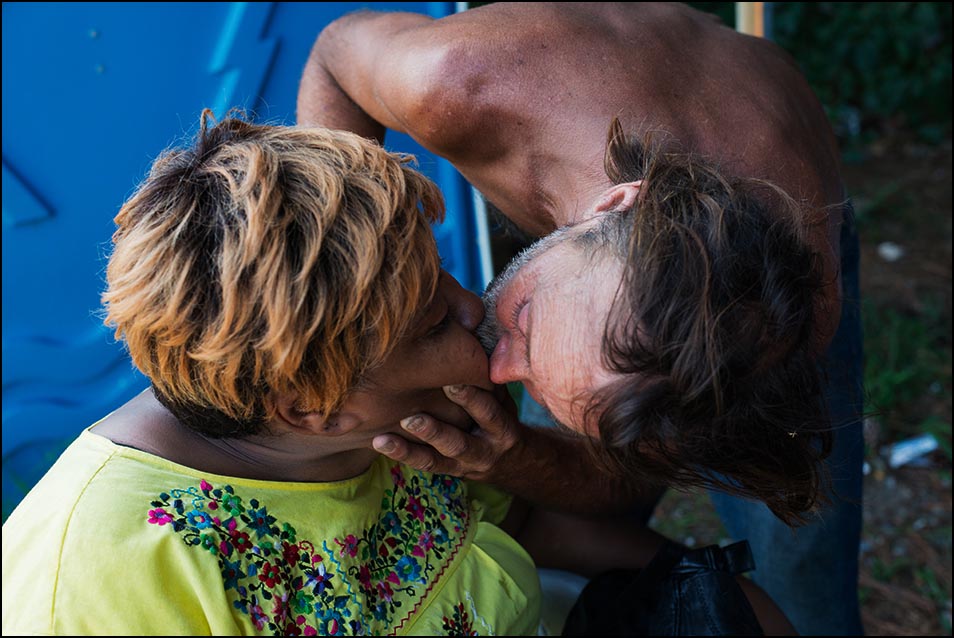Spotlight On Ian Bates
Dec 28, 2012

TID:
This is a very arresting image; thanks for sharing this and giving us the opportunity to learn more about it. Please tell us a little of the backstory.
IAN:
I made this picture during the summer of 2012 where I was spending my time interning with fellow photographer, Matt Eich in Norfolk, Virginia. I had never been to southern Virginia and naturally I wanted to explore what it had to offer. One thing I’ve learned while at Ohio University is that wandering and getting lost is sometimes the best way to find stories and make pictures. There’s a certain sense of freedom that comes along with getting lost that really interests me, so I get lost often.
In this particular case I had a destination. Matt had spoken to me about this place called Tyler’s Beach, which is a small harbor on the James River in Smithfield, Virginia where a few oyster and crab fishermen are based. It was during one of my days off that I made my first trip there. I met four men who were drinking on the edge of the parking lot in the cool shade. I made a connection with two of them after spending a few hours hanging around and getting to know the group. The man in the picture, Frankie, particularly interested me.

TID:
What challenges did you encounter while working to make this image? In addition, please key in on any feeling, emotions you were feeling at the time.
IAN:
I still have a hard time sometimes walking up to people and asking them to let me make pictures of them. There are a lot of people who don’t want to be photographed and I feel terrible asking them. The first time I walked up to Frankie’s group, two of the four wouldn’t let me make pictures of them or talk to me. It took time for them to start talking to me. As I shared personal stories with them they began to tell their's back. I think a lot of people sometimes see photographers as media monsters and it's important to show them that you are just like them, human. It's truly disheartening when somebody doesn’t trust you to make their picture and won’t give you a chance. I found that the more time spent with a person or people allows them to open up to you, thus letting them relax so you can show who they really are.
TID:
How did you prepare for this shoot, or what did you to put yourself in place to make this happen?
IAN:
I have always told myself not to think about pictures I want to make in a situation but to let the situation unfold and figure it out from there. I always seem to break that rule and put together the scene in my mind and almost never end up with the picture I was expecting. In this case I did exactly that. My only preparations were that I was expecting them to be sitting in the chairs again, drinking beers and chatting each other up like the first time I was there. This wasn’t the case and they were all over the place, it was refreshing. I think most pictures I make that I think are successful are usually made in a moment of luck and this is no exception.

A lot of the time I see someone while I am driving somewhere and want to pull over and stop to talk to them and find out what their story is. I almost never do this the first time I see them and usually end up passing them, driving down the road while kicking myself asking myself why I didn’t stop. I end up turning around and either stopping this time or taking another pass. It really takes me some time to build up the courage to decide to talk to them and think about what I am going to say.
It really is a mind game because people are generally very nice and want to hear you out. I also notice myself not having as much trouble when I am photographing for a publication compared to for myself. I still find it hard to explain why I want to tell someone's story through pictures when no one else may see it. It is something that I want to work on a lot and I don’t think that initial fear will ever go away.
I did the only thing I know how to do in situations like these, I talked. It is important for me to get to know the people I am photographing a little bit before I even make a single picture. Sometimes this is impossible. When you can relate with the people you are photographing it helps you make better pictures. Although, as journalists, we are supposed to be objective, I think that in order to make a good picture you need to put something personal behind it. Once I could relate with Frankie and his group, that's when the pictures started coming together. I knew what pictures I needed to make to tell their story and I did my best to make them.
TID:
Now, onto the moment. Can you talk about the moments leading up to the picture and also the actual moment?
IAN:
I made lots of pictures of him the first time I met him but none of them really clicked with his story. I went back a week or so later to find him sitting in the same spot with his friends and started making pictures again. This time, the police had been coming into the parking lot every once in a while so they had been on alert so they wouldn’t get caught drinking. I was kneeling down next to Frankie who was sitting in a chair when a car pulled in and Frankie spun around in a second to check if it was a police officer. The fright on his face made me pull my camera up to my eye as I clicked the shutter.

TID:
What surprised you about the moment that you weren't expecting?
IAN:
It shocked me how frightened he was about the chance of getting in trouble with the law for drinking in a place he shouldn’t be. Frankie was a sunburnt oyster fisherman and gave off a tough vibe with anything he did while I was around so it was surprising to see his concern. It was a moment I didn’t expect to happen and I was lucky enough to be in the right place at the right time.
TID:
What have you learned about yourself in the process of making images like this?

With anything I photograph I know I need to be ready for the unexpected. I often find myself in quiet places where not much is happening and then all of a sudden it's there. It made me think more about how important it is to not think of the people I am photographing as subjects, but to think of them as fellow humans. They have a story I want to tell and in order for me to gain the trust that I need to make the pictures that will be strong enough to tell that story, I need to be sincere with them. The two days I photographed at Tyler’s Beach with Frankie and his friends changed the way I look at people when I am behind the camera. It was wonderful to get to know them, especially Frankie. It made me appreciate the opportunities that the camera allows me and thankful for the people I get to meet because of it.
TID:
One common struggle for photographers is getting close in people's personal space. What language skills or what body language do you use to help you get close in situations like this?
IAN:
Every situation and person is different. Some people are very open with you right off the bat and others take time to show you their real self. I just try to be as open and honest with them as possible. I think of it as a give and take situation. I have noticed that if you try to make sure the person is comfortable with you being around just as an observer of their life then bringing the camera into the situation is much easier.
Overall, I think time builds relationships. The more time you spend with and around someone the more new situations will open up and build on that essential trust. I am so lucky to have had the opportunities that I’ve had so far as a photojournalist. I can’t give enough thanks to the people who have guided me through the process of just being a good person and being a photographer second. I really couldn’t have done it by myself.
TID:
When people tell you not to take their picture, how do you handle that?
IAN:
This happens a lot to me and I respect peoples' wishes as much as I possibly can. I learned early on in my freshman year at Ohio University to be persistent and that has helped me so many times. I think the first time you ask someone if you can hang around and make pictures of them their gut reaction is to say no. I have found that if you stay and try to explain yourself a bit better and be upfront then people often change their minds. There are always those people who just really don’t want their picture taken and there isn’t anything you can do about that.

TID:
In conclusion, what advice do you have for photographers in this situation?
IAN:
I am generally on the receiving end of advice at this point in my career but it is important that I make pictures of what I want to make pictures of. I find that this allows me to commit myself to that moment that much more. Explore your surroundings. Driving the backroads around the places I live shows me more about the people and the place than doing a Google search. I find it's important to always have a camera with you. Documenting your own life is just as important to your mind and work as documenting somebody else’s.
:::BIO:::
Ian C. Bates (b. 1992, United States) grew up in the suburban town of North Brunswick, New Jersey. His interest in photography began with his obsession of creating things. In elementary school he received a cheap point and shoot film camera to bring on a field trip to the zoo, but didn’t realize his love for the photograph until he later began taking photography classes in his sophomore year in high school. The images became a way to store memories with truth and without them fading away. He eventually ended up studying photojournalism at Ohio University. He is now a junior at Ohio University working on his bachelor of science in visual communication with an emphasis in photojournalism and a Specialization in Sociology. He has been recognized by the White House News Photographer Association, NPPA, College Photographer of the Year and the LUCEO student project award. He has worked for clients such as the AARP Bulletin, The New York Times, Reuters, The Athens NEWS and The Asbury Park Press. He recently attended the Eddie Adams Workshop and will be interning for the Dallas Morning News for the Winter/Spring of 2013.
You can see more of his work here: